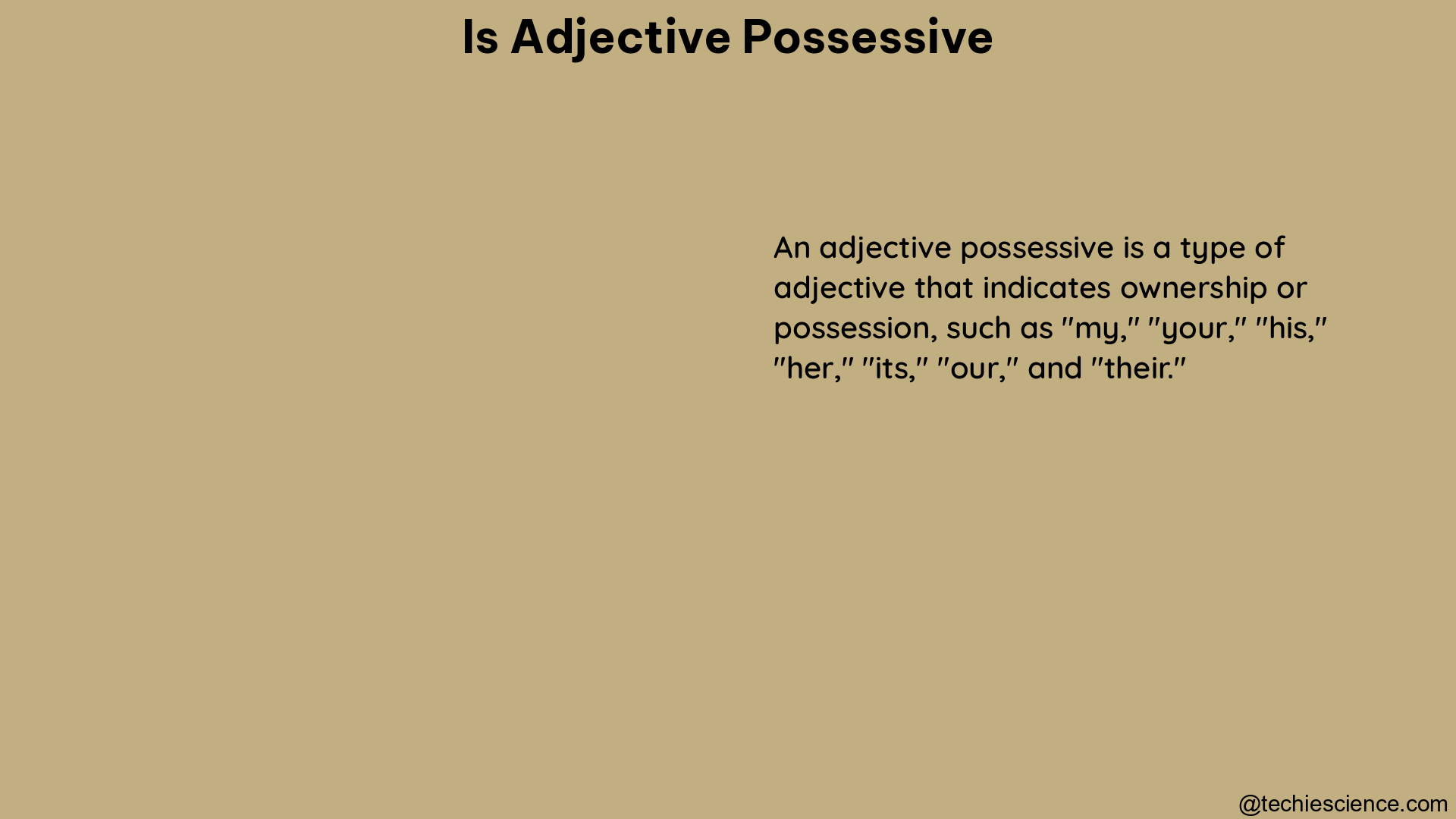A possessive adjective is a crucial part of speech in the English language, used to express ownership or belonging. Whether you’re a student learning English or a seasoned writer, understanding the proper use of possessive adjectives is essential for clear and effective communication. In this comprehensive guide, we’ll delve into the definition, examples, and nuances of possessive adjectives, providing you with a thorough understanding of this essential grammatical concept.
Definition of Possessive Adjectives
Possessive adjectives are a type of adjective that indicate possession or ownership. They are used to modify nouns, specifying who or what the noun belongs to. Possessive adjectives include words such as “my,” “your,” “his,” “her,” “its,” “our,” and “their.” These adjectives precede the noun they modify, providing information about the relationship between the noun and the possessor.
Examples of Possessive Adjectives

Here are some examples of possessive adjectives in use:
- My book is on the table.
- That is your car.
- His phone is ringing.
- Her hair is long.
- The cat chased its tail.
- Our family is going on a trip.
- Their dog is very friendly.
In each of these examples, the possessive adjective (in bold) precedes the noun it modifies, indicating ownership or possession.
Usage of Possessive Adjectives
Possessive adjectives are used to show who or what something belongs to. They are typically placed before the noun they modify, as demonstrated in the examples above. Possessive adjectives can be used in a variety of contexts, including:
- Ownership: “This is my car.”
- Relationship: “That is his sister.”
- Belonging: “Our family is going on vacation.”
- Characteristics: “Her smile is beautiful.”
It’s important to note that possessive adjectives must agree with the noun they modify in number and person. For example, “my” is used for a singular, first-person noun, while “our” is used for a plural, first-person noun.
Possessive Adjectives vs. Possessive Pronouns
While possessive adjectives and possessive pronouns both indicate ownership or possession, they serve different grammatical functions. Possessive adjectives modify nouns, while possessive pronouns replace nouns.
Here’s an example to illustrate the difference:
- Possessive adjective: My book is on the table.
- Possessive pronoun: That book is mine.
In the first sentence, “my” is a possessive adjective that modifies the noun “book.” In the second sentence, “mine” is a possessive pronoun that replaces the noun “book.”
Common Mistakes: “Its” vs. “It’s”
One of the most common mistakes in using possessive adjectives is confusing “its” (the possessive adjective) with “it’s” (the contraction for “it is” or “it has”). Here’s a quick guide to help you distinguish between the two:
- Its (possessive adjective): The cat chased its tail.
- It’s (contraction): It’s a beautiful day.
Remember, “its” is used to show possession, while “it’s” is a contraction of “it is” or “it has.”
Exercises and Practice
To help reinforce your understanding of possessive adjectives, try completing the following exercises:
- This is ______ book.
- That is ______ car.
- ______ dog is very friendly.
Answers:
1. This is my book.
2. That is your car.
3. Our dog is very friendly.
By practicing with these types of exercises, you can improve your ability to correctly identify and use possessive adjectives in your writing and speech.
Conclusion
Possessive adjectives are a fundamental part of the English language, used to express ownership and belonging. By understanding the definition, examples, and proper usage of possessive adjectives, you can enhance your communication skills and avoid common mistakes. Remember to pay close attention to the distinction between possessive adjectives and possessive pronouns, as well as the difference between “its” and “it’s.” With the knowledge and practice provided in this comprehensive guide, you’ll be well on your way to mastering the use of possessive adjectives.
References
- BYJU’S. (n.d.). Possessive Adjectives – Meaning, Definition and Examples. Retrieved from https://byjus.com/english/possessive-adjectives/
- Grammarly. (n.d.). Possessive Pronouns and Possessive Adjectives. Retrieved from https://www.grammarly.com/blog/possessive-pronouns/
- Grammar. (n.d.). Possessive Adjectives – English Grammar Lesson and Exercises. Retrieved from https://www.grammar.cl/Notes/Possessive_Adjectives.htm

Hi…..I’m a graduate with a Bachelor’s degree in English Literature. I wish to do a Masters in the same field someday and continue my career in Academia.
Let’s connect through LinkedIn: